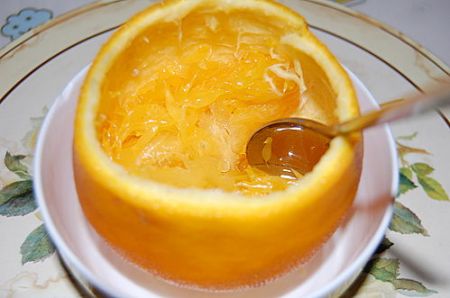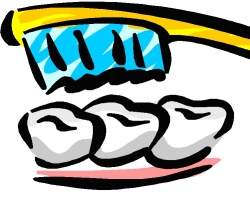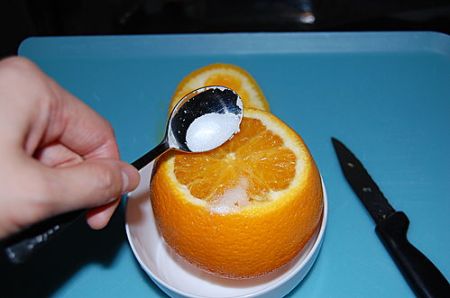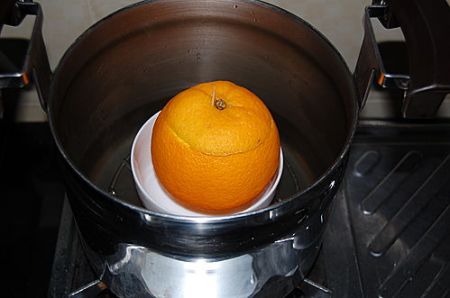Archive for June, 2010
Home Remedies for a Toothache
June 18, 2010A toothache will be the most excruciating pain you will have to endure in your life. It can be caused by many things:
Garlic is a recommended ingredient for toothache pain relief. It can be found in the kitchen, maybe on your spice rack. The way to use garlic for pain relief is to chew a clove or two on the tooth. This for some may be painful so another thing you can do is use clove oil. To use this all you have to do mix 3 drops of it with a little bit of olive oil. With this mixture get a cotton ball and soak it and rub it against your tooth or just hold it there for a while if movement hurts. 5 – 10 minutes you should start feeling better.
This is a method that you should use on children as they will find it much more appealing than garlic. The way to take this is just like with the clove oil; dip some cotton wool into the vanilla extract and let it soak up, then put it onto the affected tooth for a few minutes and you (or your child) should start feeling pain relief after a couple of minutes. For adults who prefer not to use vanilla extract there are many other varieties you can use. Some favourites with many people is using alcohol instead of the vanilla extract (whiskey or brandy not beer). This is applied the same way as vanilla extract and works just as well. It is advised that you don’t use alcohol for your children if you can help it.
Even though it is one of the worst tasting way to reduce pain of a toothache, salt is one of the favourite home remedies for a toothache. Salt is very effective as it works well with bacteria. Salt can be used on gum infections and sores in the mouth and it is also a great toothache pain reliever. The method to using salt is very simple all you need to do is dissolve a teaspoon of salt in a small glass of water (room temperature if possible). The next step is to take a small bit and instead of swallowing it whirl it around your mouth , in and out the teeth, from side to side etc… After you have finished don’t swallow! Spit it out and repeat with more water.
Indian spices for all diseases
June 16, 2010Indian spices for all diseases
COLDS
Mix a gram of dalchini/cinnamon powder with a teaspoon of honey to
cure cold. Prepare a cup of tea to which you should add ginger, clove, bay
leaf and black pepper.. This should be consumed twice a day. Reduce the
intake as the cold disappears.
GINGER FOR COLDS.
Ginger tea is very good to cure cold. Preparation of tea: cut ginger
into small pieces and boil it with water, boil it a few times and then
add sugar to sweeten and milk to taste, and drink it hot.
DRY COUGHS.
Add a gram of turmeric (haldi) powder to a teaspoon of honey for
curing dry cough. Also chew a cardamom for a long time.
BLOCKED NOSE.
For blocked nose or to relieve congestion, take a table spoon of
crushed carom seeds (ajwain) and tie it in a cloth and inhale it.
SORE THROAT.
Add a tea spoon of cumin seeds (jeera) and a few small pieces of dry
ginger to a glass of boiling water. Simmer it for a few minutes, and
then let it cool. Drink it twice daily. This will cure cold as well as
sore throat.
cure cold. Prepare a cup of tea to which you should add ginger, clove, bay
leaf and black pepper.. This should be consumed twice a day. Reduce the
intake as the cold disappears.
into small pieces and boil it with water, boil it a few times and then
add sugar to sweeten and milk to taste, and drink it hot.
curing dry cough. Also chew a cardamom for a long time.
crushed carom seeds (ajwain) and tie it in a cloth and inhale it.
ginger to a glass of boiling water. Simmer it for a few minutes, and
then let it cool. Drink it twice daily. This will cure cold as well as
sore throat.
AJWAIN/AJMO FOR ASTHMA.
Boil ajwain in water and inhale the steam.
CURE FOR BACKACHE..
Rub ginger paste on the backache to get relief.
GARLIC FOR HIGH BLOOD PRESSURE.
Have 1-2 pod garlic (lasan) first thing in the morning with water
HONEY AND GINGER FOR HIGH BLOOD PRESSURE.
Mix 1 table spoon and 1 table spoon ginger (adrak) juice, 1 table
spoon of crushed cumin seeds (jeera), and have it twice daily.

MIGRAINE.
For the cure of migraine or acute cold in the head; boil a tablespoon
of pepper powder, and a pinch of turmeric in a cup of milk, and have it
daily for a few couple of days.
BITTER GOURD/KARELA IS GOOD..
A tablespoon of amla juice mixed with a cup of fresh bitter gourd
(karela) juice and taken daily for 2 months reduces blood sugar.
TURMERIC/ ARAD CURE FOR INJURIES
For any cut or wound, apply turmeric powder to the injured portion to
stop the bleeding. It also works as an antiseptic. You can tie a
bandage after applying haldi/turmeric.
CRAMPS
You must do a self-massage using mustard oil every morning. Just take
a little oil between your palms and rub it all over your body. Then take
a shower. This is especially beneficial during winter. You could also
mix a little mustard powder with water to make a paste and apply this on
your palms and soles of your feet.
HEADACHES.
If you have a regular migraine problem, include five almonds along
with hot milk in your daily diet. You could also have a gram of black
pepper along with honey or milk, twice or thrice a day. Make an almond paste
by rubbing wet almonds against a stone. This can be applied to forehead.
Eat an apple with a little salt on an empty stomach everyday and see
its wonderful effects. OR When headache is caused by cold winds, cinnamon
works best in curing headache. Make a paste of cinnamon by mixing in
water and apply it all over your forehead
TURMERIC
FOR ARTHRITIS.
Turmeric can be used in treating arthritis due to its
anti-inflammatory property. Turmeric can be taken as a drink other than adding to dishes
to help prevent all problems. Use one teaspoon of turmeric powder per
cup of warm milk every day. It is also used as a paste for local
action.
GOOD FOR THE HEART
Turmeric lower cholesterol and by preventing the formation of the
internal blood clots improves circulation and prevents heart disease
and stroke. Turmeric can be taken as a drink other than adding to dishes
to help prevent all problems. Use one teaspoon of turmeric powder per cup
of warm milk every day. It is also used as a paste for local action.
GOOD FOR INDIGESTION
Turmeric can be used to relieve digestive problems like ulcers,
dysentery. Turmeric can be taken as a drink other than adding to
dishes to help prevent all problems. Use one teaspoon of turmeric powder per
cup of warm milk every day. It is also used as a paste for local
action.
HONEY IS A GOOD CURE FOR ALL DISEASES
Mix 1 teaspoon honey with 1 teaspoon cinnamon powder and have at night.
HICCUPS
Take a warm slice of lemon and sprinkle salt, sugar and black pepper
on it.. The lemon should be eaten until the hiccups stop.
HIGH BLOOD CHOLESTEROL
In 1 glass of water, add 2 tbsps of coriander/dhania seeds and bring
to a boil. Let the decoction cool for some time and then strain. Drink
this mixture two times in a day. OR Sunflower seeds are extremely
beneficial, as they contain linoleic acid that helps in reducing the cholesterol
deposits on the walls of arteries.
PILES
Radish juice should be taken twice a day, once in the morning and
then later in the night. Initially drink about ? cup of radish juice and
then gradually increase it to ? cup. OR Soak 3-4 figs in a glass of water
Keep it overnight. Consume the figs on an empty stomach, the next day
in the morning
VOMITING
Take 2 cardamoms/elachi and roast them on a dry pan (tava). Powder the
cardamoms and thereafter add a tsp of honey in it. Consume it
frequently. It serves as a fabulous home remedy for vomiting. OR In
the mixture of 1 tsp of mint juice and 1 tsp limejuice, add ? tsp of
ginger juice and 1 tsp honey. Drink this mixture to prevent vomiting. OR
Limejuice is an effective remedy for vomiting. Take a glass of chilled
limejuice and sip slowly. To prevent vomiting, drink ginger tea. OR In
1 glass water, add some honey and drink sip by sip.
WARTS
Apply castor oil daily over the problematic area. Continue for
several months. OR Apply milky juice of fresh and barely-ripe figs a number of
times a day. Continue for two weeks. OR Rub cut raw potatoes on the
affected area several times daily. Continue for at least two weeks. OR
Rub cut onions on the warts to stimulate the circulation of blood.. OR
Apply milk from the cut end of dandelion over the warts 2-3 times a
day. OR Apply oil extracted from the shell of the cashew nut over the
warts. OR Apply Papaya juice OR Apply Pineapple juice.
URINARY TRACT INFECTION
In 8 oz of water, put ? tsp of baking soda and drink it. OR Drink
plenty of water, as it aids in flushing out the waste products from the body.
OR Drink Cranberry juice. You can also add some apple juice for taste.
SINUSITIS
Mango serves as an effective home remedy for preventing the frequent
attacks of sinus, as it is packed with loads of vitamin A. OR Another
beneficial remedy consists of consuming pungent foods like onion and
garlic, as a part of your daily meals. OR Fenugreek/methi leaves are
considered valua
White rice link to diabetes
June 16, 2010Study links white rice
to diabetes risk
Rice loses most of its bran and germ —
its most important sources of fiber and nutrients —
when it is refined to produce the white variety.
Brown rice, which retains the bran and germ, has more fibre, minerals, vitamins and phytochemicals than white rice. It also usually does not cause blood sugar levels to spike as much as the white variety.
A US-based study linked eating white rice to higher risk of developing type-2 diabetes, and backed long-held claims that brown rice is healthier than the white variety.
People who ate at least five servings of white rice per week had a 17 per cent greater risk of developing diabetes than those who consumed less than one serving per month.
The study also found that consuming two or more servings of brown rice per week was associated with an 11 per cent lower risk of developing type-2 diabetes than those who ate less than one serving a month.
Patients with diabetes have high blood sugar levels, which are linked to the body’s inability to produce enough insulin in order to properly break down sugars and starches into glucose for energy.
Benefits of Curry Leaves
June 8, 2010What to Eat to Beat Knee Pain
June 2, 2010Simple diet changes can help chase away knee pain.
Learn which foods can help — and hurt — knee health.
Looking for a natural way to relieve knee pain? You may want to tweak your diet. A growing body of research suggests that small dietary changes can add up to big benefits for knee health. “A number of foods have powerful anti-inflammatory and pain-relieving properties that may be as effective as some prescription medicines for arthritis and other types of knee pain,” says Beth Reardon, RD, MS, an integrative nutritionist and medicinal foods expert at Duke Integrative Medicine Center in Durham, N.C. Read on to learn how mealtime may be affecting the health of your knees.
Diet and Knee Pain: Go Fish
The omega-3 fatty acids found in fish are natural anti-inflammatories. Calming joint inflammation can often help ease knee soreness, according to Steven Stuchin, MD, director of orthopedic surgery at NYU Hospital for Joint Diseases in New York City. In randomized clinical studies, omega-3 fatty acids were found to ease pain and reduce the duration of morning stiffness in people with rheumatoid arthritis. The best sources of omega-3s are salmon, tuna, sardines, herring, cod, and mackerel, as well as fish oil supplements. Another benefit of adding fish to your diet: “Fish is safer than anti-inflammatory medication, which may have side effects,” says Reardon.
Diet and Knee Pain: Drink Orange Juice
Orange juice is a top-notch source of vitamin C, a nutrient that may guard against knee osteoarthritis. A 10-year Australian study of almost 300 middle-aged adults found that those getting high amounts of vitamin C were less likely to suffer the kind of bone degeneration associated with knee osteoarthritis. “Drinking a glass of orange juice provides about 25 percent more vitamin C than eating an orange,” says Reardon. Other good sources of vitamin C to prevent knee pain are green peppers, grapefruit, and strawberries.
Diet and Knee Pain: Eat Spinach and Onions
Follow Popeye’s lead and add spinach to your regime. Australian researchers found that getting high amounts of the antioxidants lutein and zeaxanthin (found in green veggies like spinach) can help relieve knee pain caused by osteoarthritis. Several studies have found an additional benefit of lutein and zeaxanthin, as they can help prevent vision-related diseases.
Don’t forget to add some onions to your spinach salad as well. Adding onions to salads, sandwiches, stews, and casseroles may help put the brakes on knee pain. Onions are a rich source of quercetin, a flavonoid with strong anti-inflammatory properties, says Reardon. In studies of arthritic mice, quercetin resulted in significant decreases in arthritis symptoms. Apples, red grapes, and tea are also good sources of quercetin.
Diet and Knee Pain: Order Indian Food
A helping of curry could do wonders for your knee pain. That’s because turmeric, a spice used in curry and other Indian dishes, contains curcumin, a powerful anti-inflammatory. “Curcumin works similarly to COX-2 inhibitors — drugs that reduce the COX-2 enzyme that causes the pain and swelling of arthritis,” says Reardon. A 2006 Canadian study of the effects of both curcumin and quercetin found that curcumin reduced the inflammation of arthritis in animals. Quercetin (the flavonoid in onions) worked too, but not to the extent of the curcumin.
Diet and Knee Pain: Use Ginger Generously
The herb ginger traditionally has been used to relieve upset stomach, but researchers recently discovered that it also reduces knee pain by decreasing inflammation. In a study of 261 patients with moderate to severe knee pain due to osteoarthritis, ginger extract significantly reduced knee pain during standing and walking. Cooking with this spice can increase the flavor of meals while decreasing knee pain.
Diet and Knee Pain: Avoid Refined Carbohydrates
Some research suggests that diets high in refined carbohydrates can increase inflammation, says Reardon. She recommends steering clear of white bread, pasta, and baked goods — taking these foods out of your diet can have an added bonus of helping you drop excess pounds.
Because changing your diet is a relatively easy step, it makes sense to try some — or all — of the foods listed above. You may find some relief from knee pain and get some added health benefits to boot.
Orange juice is a top-notch source of vitamin C, a nutrient that may guard against knee osteoarthritis. A 10-year Australian study of almost 300 middle-aged adults found that those getting high amounts of vitamin C were less likely to suffer the kind of bone degeneration associated with knee osteoarthritis. “Drinking a glass of orange juice provides about 25 percent more vitamin C than eating an orange,” says Reardon. Other good sources of vitamin C to prevent knee pain are green peppers, grapefruit, and strawberries.
Follow Popeye’s lead and add spinach to your regime. Australian researchers found that getting high amounts of the antioxidants lutein and zeaxanthin (found in green veggies like spinach) can help relieve knee pain caused by osteoarthritis. Several studies have found an additional benefit of lutein and zeaxanthin, as they can help prevent vision-related diseases.
A helping of curry could do wonders for your knee pain. That’s because turmeric, a spice used in curry and other Indian dishes, contains curcumin, a powerful anti-inflammatory. “Curcumin works similarly to COX-2 inhibitors — drugs that reduce the COX-2 enzyme that causes the pain and swelling of arthritis,” says Reardon. A 2006 Canadian study of the effects of both curcumin and quercetin found that curcumin reduced the inflammation of arthritis in animals. Quercetin (the flavonoid in onions) worked too, but not to the extent of the curcumin.
The herb ginger traditionally has been used to relieve upset stomach, but researchers recently discovered that it also reduces knee pain by decreasing inflammation. In a study of 261 patients with moderate to severe knee pain due to osteoarthritis, ginger extract significantly reduced knee pain during standing and walking. Cooking with this spice can increase the flavor of meals while decreasing knee pain.
Tips to stop cough.
June 2, 2010This method had been tested by many people.
One of the best methods to stop cough.
Cut off the top part of the orange,
put some salt into the orange,
and put back the top part.
Steam it 20 minutes and eat all the fresh
including the juice at the bottom of the bowl.
Taste not very nice but cures your prolonged cough in days.

Cut off a little shelf of top.
Add 1 teaspoon of salt
Place in a bowl and steam it 20 minutes
Finish it
 Don’t forget to finish the water left in the bowl. Its taste sour and salty, good for cure.
Don’t forget to finish the water left in the bowl. Its taste sour and salty, good for cure.












